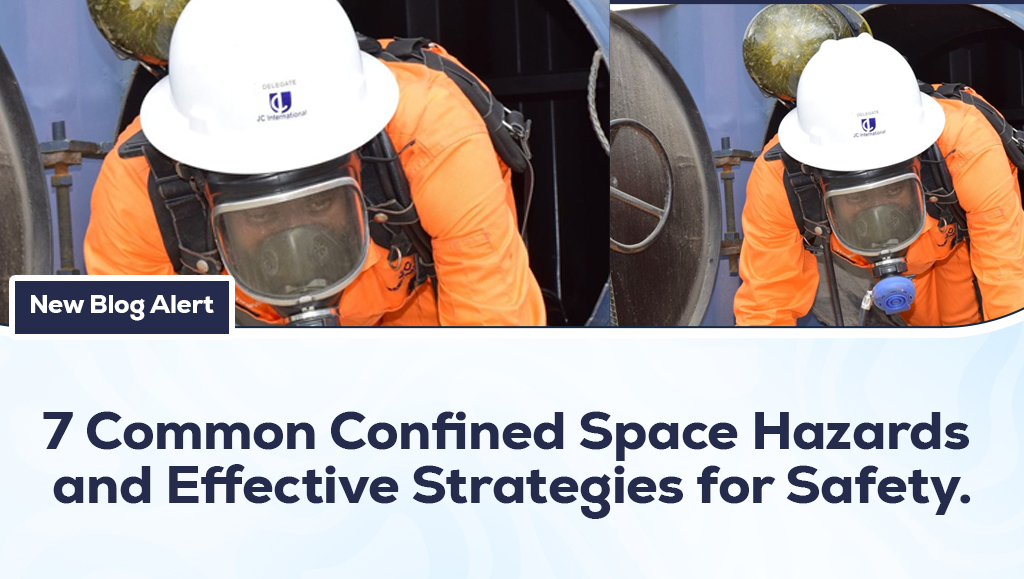
7 Common confined Space HazardS AND how to control them.
What is a confined space?
A confined space is an area that is not designed for continuous human occupancy but has limited means of entry and exit and is large enough for a person to enter and perform work. These spaces can pose unique safety challenges due to their restricted nature and potential hazards. Some examples of confined spaces include storage tanks, silos, manholes, boilers, pipelines, underground tunnels, vats or pits, and crawl spaces.
While confined spaces are essential for many industrial and construction activities, they pose significant risks that need to be managed safely and efficiently. Understanding these risks and implementing appropriate safety measures is crucial to preventing accidents and ensuring the well-being of workers.
7 Common confined Space HazardS AND THEIR CONTROL MEASURES.
Here is a look at some common hazards found in confined spaces and strategies for addressing them.
1. Lack of Oxygen
One of the most critical hazards in confined spaces is a lack of oxygen. These spaces can have poor ventilation, leading to oxygen depletion. Low oxygen levels can cause dizziness, loss of consciousness, and even death.
How to Address It:
– Monitor Oxygen Levels: Use portable gas detectors to continuously monitor oxygen levels and ensure they remain within safe limits.
-Ventilation: Implement proper ventilation systems to introduce fresh air into the confined space. This may include mechanical fans or natural ventilation methods.
-Pre-Entry Testing: Always test the atmosphere before entry to confirm that oxygen levels are adequate.
2. Toxic Gases and Fumes
Confined spaces may contain toxic gases or fumes from chemical reactions, combustion processes, or other sources. Exposure to these can lead to respiratory issues, poisoning, or long-term health problems.
How to Address It:
– Gas Detection: Use multi-gas detectors to identify the presence of harmful gases and fumes. Ensure that detectors are calibrated and maintained regularly.
– Proper PPE: Provide appropriate personal protective equipment (PPE), such as respiratory protection, to workers entering confined spaces.
– Safe Handling and Storage: Properly handle and store chemicals and materials that may release toxic gases to minimize their risk.

3. flammable or explosive atmospheres
The presence of flammable gases, vapors, or dust can create explosive atmospheres in confined spaces. This risk is particularly significant in industries like oil and gas or chemical manufacturing.
How to Address It:
-Explosion-Proof Equipment: Use equipment and tools rated for use in explosive atmospheres to prevent ignition.
– Regular Monitoring: Continuously monitor for flammable gases or vapors and ensure that the confined space is free from sources of ignition.
-Safe Work Practices: Implement strict no-smoking policies and control the use of hot work processes like welding or cutting.
4. Physical Hazards
Confined spaces often have physical hazards such as sharp edges, moving machinery, or uneven surfaces. These can cause injuries like cuts, bruises, or falls.
How to Address It:
-Hazard Assessment: Conduct a thorough hazard assessment of the confined space to identify and address physical risks.
-Proper Training: Train workers on how to navigate and work safely within confined spaces, including how to avoid or mitigate physical hazards.
-Safety Gear: Equip workers with appropriate PPE, including protective clothing and safety harnesses, as needed.
5. Engulfment AND ENTRAPMENT
Materials such as grain, sand, or liquids can engulf or entrap workers in confined spaces, posing serious risks of suffocation or crushing.
How to Address It:
– Material Handling: Avoid storing loose materials in confined spaces whenever possible. If necessary, ensure that materials are properly contained and monitored.
-Emergency Procedures: Develop and practice emergency procedures for rescuing workers who may become engulfed or trapped.
-Proper Training: Train workers on the dangers of engulfment and entrapment and the procedures to follow if they encounter these hazards.
6. POOR VISIBILITY
Limited lighting and visibility can make it difficult for workers to see hazards or navigate confined spaces safely.
How to Address It:
-Adequate Lighting: Provide sufficient lighting to ensure that workers can see and avoid potential hazards.
-Clear Markings: Use reflective or luminescent markings to highlight hazards and exits within the confined space.
-Regular Inspections: Conduct regular inspections to ensure that lighting and visibility conditions are maintained.
7. Heat Stress
Confined spaces can become very hot, leading to heat stress or heat-related illnesses. This is especially a concern in spaces with high ambient temperatures or where workers are engaging in physically demanding tasks.
How to Address It:
-Temperature Monitoring: Monitor and manage the temperature within the confined space. Use fans or cooling systems as necessary.
-Hydration and Breaks: Ensure workers have access to water and schedule regular breaks to prevent heat stress.
-Training: Train workers to recognize the symptoms of heat stress and the importance of staying hydrated.
Confined spaces present a unique set of hazards that require a comprehensive approach to safety management. By understanding these risks and implementing effective measures, you can protect workers and maintain a safe working environment. Regular training, proper equipment, and vigilant monitoring are key components of a successful confined space safety program.
JC International provides Confined Space Management services in Nigeria. Contact us for confined space entry and rescue services.

Leave a Reply